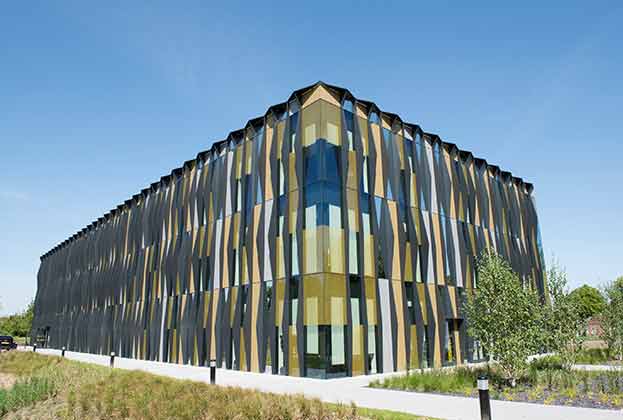Mapping out the key economic centres located within the arc
While the arc is often spoken of as a single unified area, it actually operates as several distinct economic centres, with varying commercial and residential real estate markets. Housing availability and affordability vary significantly; the average residential transaction value across the arc in the year to March 2019 was £373,000, but ranged from £228,000 in Northampton to £524,000 in Cambridge. The ratio of average earnings to average house prices varies from 6.7 in Corby to 12.9 in Cambridge.
Unsurprisingly, in Oxford and Cambridge, education is the largest employment sector, but in the surrounding local authorities of South Cambridgeshire, South Oxfordshire and Vale of White Horse, the professional, scientific and tech sector dominates. In Milton Keynes and Bedford, although the scientific and tech sectors are still very productive with a high GVA per worker, the largest employment sector is wholesale and retail trade.
While knowledge-intensive industries form a key part of the economies of this region, there are significant variations across the arc and clusters often have strong links with London and Birmingham rather than with other locations in the corridor. The 2017 SQW report for the National Infrastructure Commission identified four main clusters; the greater Oxford area with strengths in bioscience and high tech engineering through the Harwell campus, high performance engineering centred on Silverstone with links to Milton Keynes, Cranfield and Northampton, food tech around Bedford and the Ivel Valley, and bioscience, pharmaceuticals and digital across greater Cambridge, benefiting from the universities and well-established science parks.
The pattern of future growth is also not anticipated to be uniform across the arc, and will result in very different commercial property requirements. The corridor between Cambridge and Luton is projected to see the most growth in the professional, scientific and tech sector, while in both Bedford and Oxford, health is anticipated to be the fastest-growing employer.
Milton Keynes and Northampton are both projected to see strong growth in the administrative and support sector. Future housing development will need to account for the range of affordability and tenure needs that will arise from this growth.
Read the articles within The Oxford-Cambridge Innovation Arc below.






.jpg)

